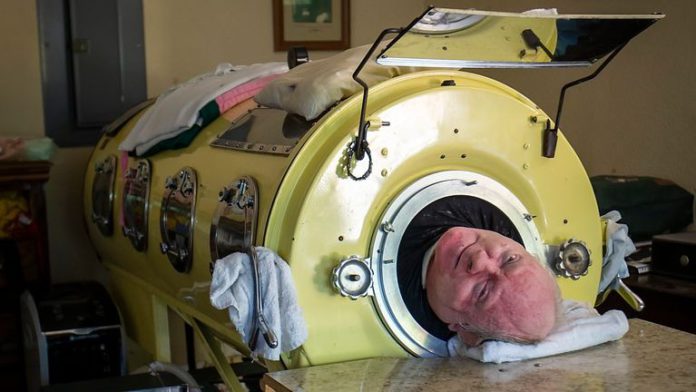
The polio survivor known as “the man in the iron lung” has died at the age of 78.
Paul Alexander contracted polio in 1952 when he was six, leaving him paralysed from the neck down.
The disease left him unable to breathe independently, leading doctors to place him in the metal cylinder, where he would spend the rest of his life.
He would go on to earn a law degree – and practise law – as well as publish a memoir.
“Paul Alexander, ‘The Man in the Iron Lung’, passed away yesterday,” a post on a fundraising website said.
“In this time Paul went to college, became a lawyer, and a published author.
“Paul was an incredible role model.”
In 1952, when he became ill, doctors in his hometown of Dallas operated on him, saving his life. But polio meant his body was no longer able to breathe on his own.
The answer was to place him in a so-called iron lung – a metal cylinder enclosing his body up to his neck.
The lung, which he called his “old iron horse”, allowed him to breathe. Bellows sucked air out of the cylinder, forcing his lungs to expand and take in air. When the air was let back in, the same process in reverse made his lungs deflate.
After years, Alexander eventually learned to breathe by himself so that he was able to leave the lung for short periods of time.
Like most polio survivors placed in iron lungs, he was not expected to survive long. But he lived for decades, long after the invention of the polio vaccine in the 1950s all but eradicated the disease in the Western world.
He graduated from high school, then attended the Southern Methodist University. In 1984, he gained a law degree from the University of Texas at Austin. Admitted to the bar two years later, he practiced as a lawyer for decades.
“I knew if I was going to do anything with my life, it was going to have to be a mental thing,” he told the Guardian in 2020.
That year, he published a memoir which reportedly took him eight years to write using a plastic stick to type on a keyboard and dictating to a friend.
Advances in medicine made iron lungs obsolete by the 1960s, replaced by ventilators. But Alexander kept living in the cylinder because, he said, he was used to it.
He was recognised by Guinness World Records as the person who lived the longest in an iron lung.

